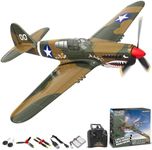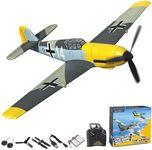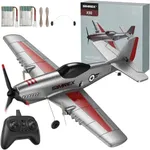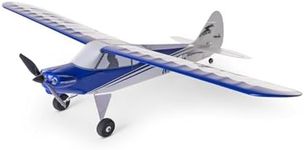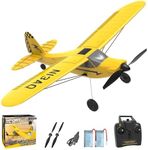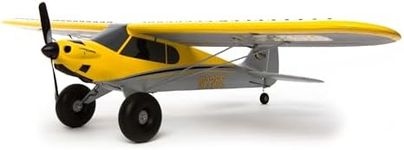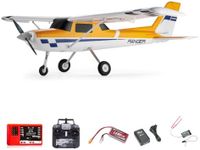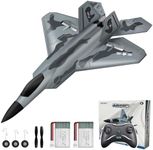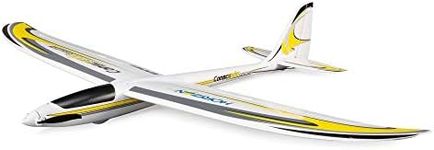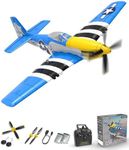Buying Guide for the Best Rc Airplanes
Choosing the right RC airplane can be an exciting journey, whether you're a beginner or an experienced pilot. The key is to understand your own needs and preferences, as well as the different specifications that define each model. By focusing on the right specs, you can find an RC airplane that matches your skill level, flying style, and the environment in which you plan to fly. Consider where you will be flying, how much time you want to spend on maintenance, and what kind of performance you are looking for. This will help you narrow down your options and make an informed decision.Type of RC AirplaneRC airplanes come in various types, such as trainers, sport planes, gliders, and aerobatic planes. The type of airplane is important because it determines the flying characteristics and suitability for different skill levels. Trainers are ideal for beginners due to their stability and ease of control. Sport planes offer more agility and are suitable for intermediate pilots. Gliders are designed for long, soaring flights and are great for those who enjoy a more relaxed flying experience. Aerobatic planes are for advanced pilots who want to perform complex maneuvers. Choose a type that matches your skill level and flying goals.
WingspanThe wingspan of an RC airplane is the distance from one wingtip to the other and is crucial for determining the plane's stability and maneuverability. A larger wingspan generally provides more stability and is easier to control, making it suitable for beginners. Smaller wingspans offer more agility and are preferred by experienced pilots who want to perform aerobatics. Consider where you will be flying; larger wingspans are better for open spaces, while smaller ones are more suited for confined areas.
Power SourceRC airplanes can be powered by electric motors, gas engines, or even turbines. The power source affects the plane's performance, maintenance, and noise level. Electric motors are quiet, require less maintenance, and are ideal for beginners and those flying in noise-sensitive areas. Gas engines provide more power and longer flight times, making them suitable for larger models and experienced pilots. Turbines offer high performance and are used in advanced models. Choose a power source that aligns with your flying environment and maintenance preferences.
Control ChannelsControl channels refer to the number of functions you can control on the airplane, such as throttle, rudder, elevator, and ailerons. More channels allow for more complex maneuvers and control. Beginners should start with a 3-channel plane, which typically controls throttle, rudder, and elevator. As you gain experience, you can move to 4-channel planes that include ailerons for more advanced flying. Consider your current skill level and how much control you want over the airplane when choosing the number of channels.
MaterialThe material of an RC airplane affects its durability, weight, and ease of repair. Common materials include foam, balsa wood, and composite materials. Foam is lightweight, durable, and easy to repair, making it ideal for beginners. Balsa wood offers a more traditional build and is used in many kit models, suitable for those who enjoy building and customizing their planes. Composite materials provide strength and performance for advanced models. Choose a material that matches your experience level and how you plan to use the airplane.
